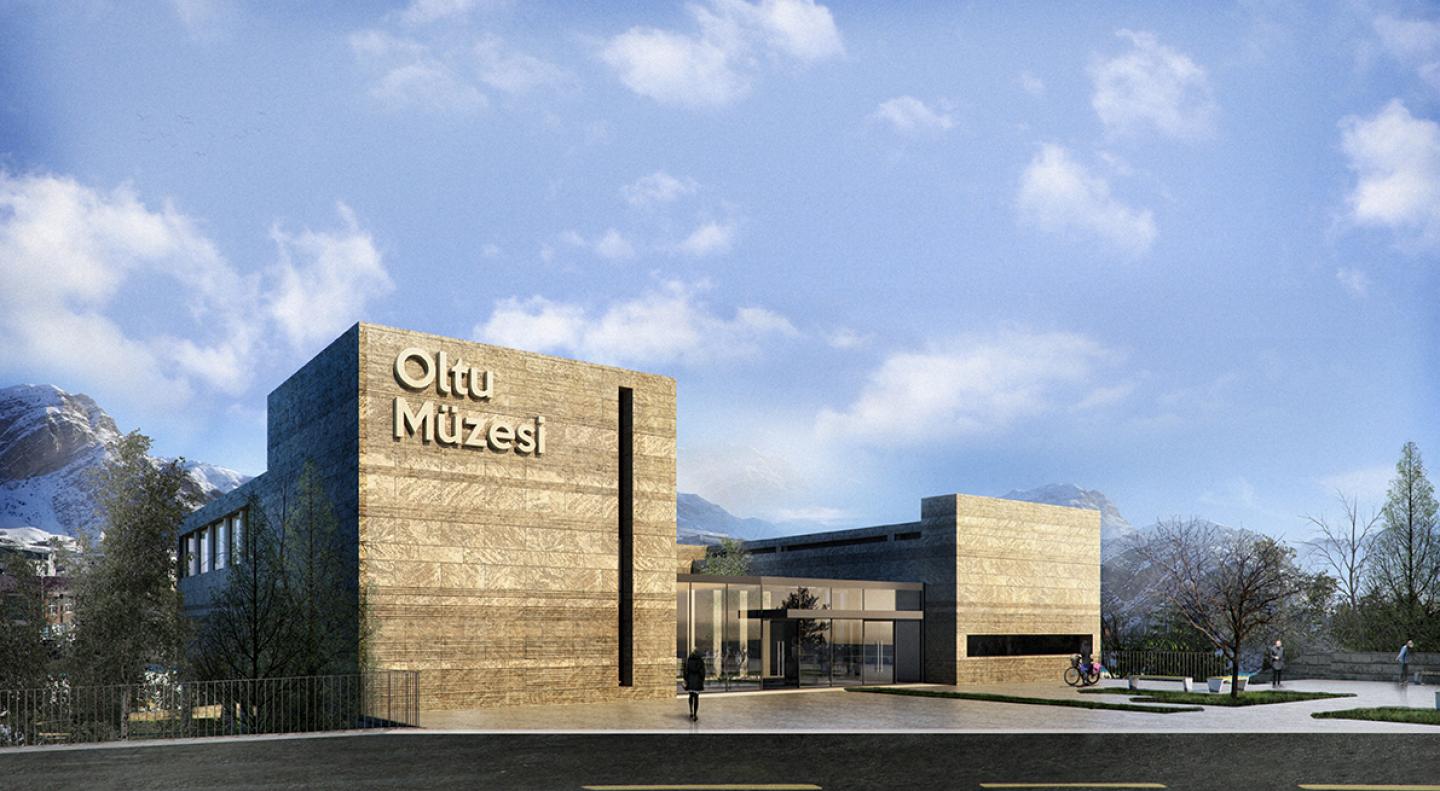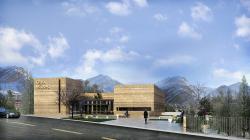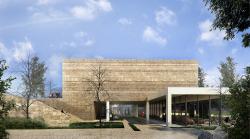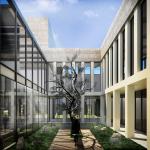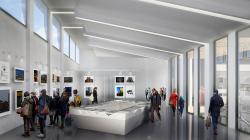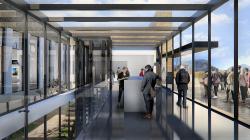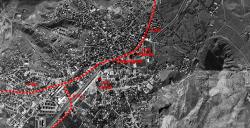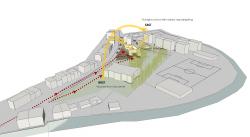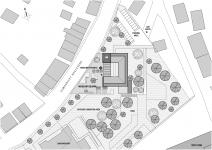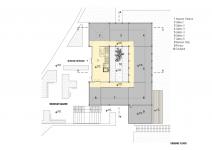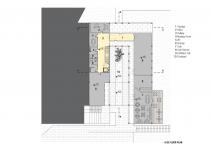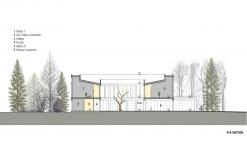The museum will exhibit work from the Islamic Council Government, located in the center of Oltu, next to the district governor’s building. Oltu was established in Erzurum in 1919 and 1920 and bears an important history, which will be presented and preserved in the museum confines. Information on current cultural activities, such as Oltu’s local stone processing, will also be made available to visitors of the museum.
Designing a structure that conforms to cultural, geographical and topographical characteristics of the region is top priority. Local climate has influenced the construction of historical buildings in Erzurum and Oltu. This can be seen best by the use of light in the massive stone structures etched with small openings for natural light to leek in from the hillside.
In using architectural objects such as domes, minarets, and air chutes the overall structures as such, combine to form the identity of the region; unmistakably unique. This can be exemplified in both the ‘Rüstempaşa Bedesten’ and ‘Çifte Minerali Madrasa.’ Both plan schemas have used courtyard structures that integrate well with urban life. Moreover, buildings like ‘Yakutiye Madrasa’ and ‘Oltu Castle,’ draw stark attention to a pillaring geometry, lustrous interior light etchings and simplicity of material usage. These local examples highlight elements that foster the desired atmosphere for this particular museum project in the same region.
There are two different points of access to the building, each on different levels. The first one is from the main road and the second is from the side closest to the governorship building. When accessing the building from the road one will find a square in front of the museum. Reminiscent of the ‘Rüstempaşa Bedesten’ schema, which also has a courtyard in it; the museum is designed as it relates to the park and the square. The courtyard, the park and the square are integrated into one another, planned as a temporary exhibition and café.
Another important design criterion is the symbolic value construction has as to its content. This venue helps the district promote current cultural activities with full use of the freedom of expression. For this reason, a geometrical, simple, and partially monumental structure formed within distinct lines has been proposed. The gallery space of the museum has a massive symbolic function and increases according to other parts of the structure. In this gallery, general information about Oltu will be given. The solar light that gets inside is taken in a controlled manner. As a natural consequence of this situation, the structure exhibits an introverted attitude throughout its outer shell. While the courtyard enriched this introverted use, the lower-level café unit leads to the park and mountain views.
Natural stone as the dominant material in the landscape and on the facade can harmoniously reflect the spirit of the surrounding texture. In this historic region a contemporary understanding is as reflexive as it is unimposing. On the same surface different stones of the same stone are brought together and the relationship of the material with light is diversified. In the entrance and courtyard facades, the daylight effect is increased and a shell made of glass and steel is designed.
2018
0000
Natural stone as the dominant material in the landscape and on the facade can harmoniously reflect the spirit of the surrounding texture. In this historic region a contemporary understanding is as reflexive as it is unimposing. On the same surface different stones of the same stone are brought together and the relationship of the material with light is diversified. In the entrance and courtyard facades, the daylight effect is increased and a shell made of glass and steel is designed.
Ender Ergün, Eser Ergün, Tuğçe Alkaya, Anıl Asal
